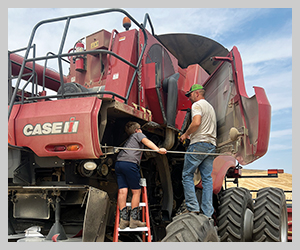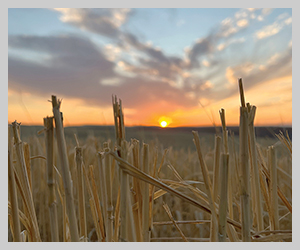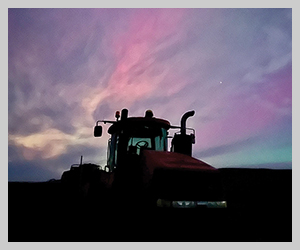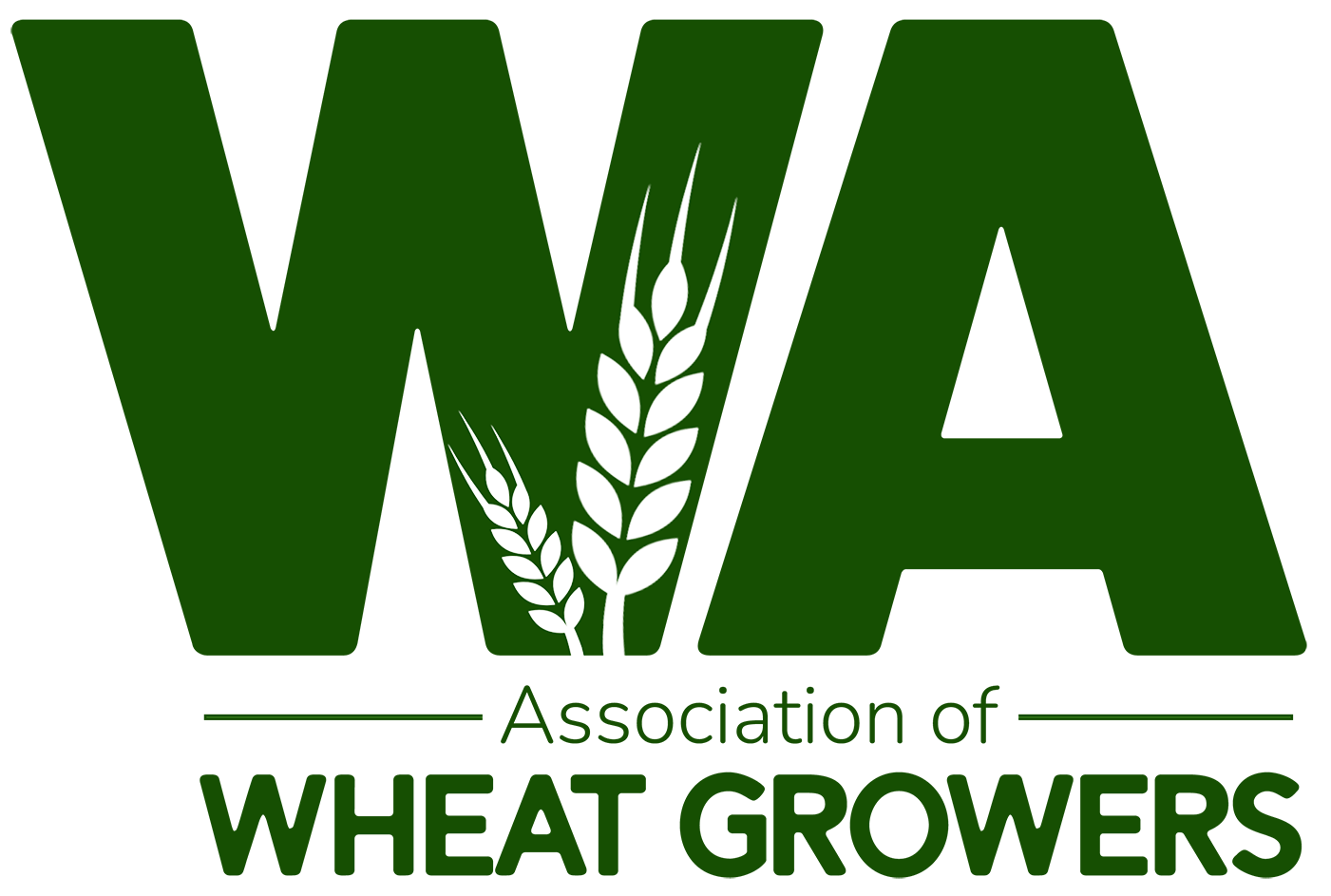
According to Peter Johnson, better agronomy is the key to unlocking a crop’s yield potential.
Johnson, an agronomist from Ontario, Canada, was the featured speaker at the Agricultural Marketing and Management Organization’s (AMMO) 2022 Wheat College, held last month in Ritzville, Wash. More than 75 producers spent the morning learning about factors that impact yield potential, followed by industry updates and breakout rotations by Washington State University Extension faculty that covered integrated weed management and pest management. Corteva Agriscience led a breakout session on nitrogen management. Two pesticide credits were offered, and giveaways were provided by Corteva and other AMMO sponsors. Steve Taylor was the winner of a Blackstone Grill, and James Amery won a Corteva cooler.
Johnson began his presentation by challenging growers to ask themselves “why” every time they made a crop management decision, and if they couldn’t answer the “why,” not to do it.
“Think through the ‘why,’ and make sure it’s the right decision,” he said. “I can’t emphasize that enough. Think about things and really try to open your mind to different possibilities. It’s tougher than you think, but it’s an important thing.”

Derek Sandison, director of the Washington State Department of Agriculture, gave an agency update.
On average, growers should be getting better yields than they did 30 years ago. Some of that is due to genetics; some of that is due to climate change. But a big chunk of that potential — Johnson pegged it at nearly 30 percent — should be coming from agronomic decisions, and if growers are making the same management decisions they always have, they are likely leaving yield potential on the table.
“Better genetics aren’t enough. You need the better agronomy to support the better genetics. You can have the best wheat variety in the world, but if you don’t put enough nitrogen on it or you plant it too deep or if you don’t do the right agronomy, it’s not going to yield any better than any wheat crop out there,” he said.
In dryland wheat, water is often considered the limiting factor to yield. Research indicates that producers need a minimum of four inches of water to grow a crop, and everything beyond that should add yield, Johnson said. Under perfect conditions with perfect timing, the maximum yield potential of an inch of water is estimated at 33 bushels.
“We think it’s all about water. That’s not true. Your management has a huge impact on how many bushels per acre you make out of the water you get,” he explained. “There’s a whole range of other things that come into play. Water matters, but management matters in terms of how you can utilize that water most efficiently. I want to challenge your brain around how to do that better.”

One of the break-out sessions included a plant diagnostic clinic with Cassandra Bates of WSU Extension.
A ‘YEN’ for more information
One of the things Johnson touted as a route to better yields was “yield enhancement networks” or YENs. First started in the U.K., YENs encourage insight into actual and potential yields by bringing together growers, researchers and agronomists, among others, to learn more about how a crop grows and develops. Participants share knowledge and data with the goal of improving farming practices and farmers’ bottom lines.
Johnson is involved in a YEN in the Great Lakes region that encompasses Ontario as well as several U.S. states and is based on how well farmers in the YEN do against their yield potential. It’s much more than just a yield competition, he said.
“We do have an overall wheat yield winner, but what we do in the YEN is we calculate your yield potential based on soil-available water, rainfall, sunshine. Once we have those three things, we plug them into a formula, and tell you, ‘hey, mister farmer, you got 40 percent of your yield potential or you got 60 percent of your yield potential,’” he explained. Last year, the YEN’s first year, the average bushel per acre was 115, but the yield potential was 220 bushels per acre. “So, on average, we achieved 52 percent yield potential. We could do better. Nobody puts their worst 10-acre chunk in the YEN, but we are still at 52 percent.”

Aaron Esser, Washington State University (WSU) Extension, talked about integrated weed management.
Lessons learned
So where does wheat yield come from? Johnson’s work has uncovered some clues.
• Soil health, the amount of organic matter in the soil, and the cycling of nutrients.
• The amount of sunlight intensity plants receive and the temperature during grain fill.
• Monoculture tends to result in poorer soil health and lower yields. Studies consistently show that a two-year break between wheat crops gives a yield bump. Summer fallow is not enough to break that cycle. Even in lower rainfall zones, Johnson encouraged growers to look for other crops to rotate in (different varieties of the same crop don’t count).
• Fall tillers make yields, not spring tillers, so early seeding is generally a good thing. But, Johnson cautioned, a really lush plant in the fall could encourage disease. A producer asked how early is too early? “Your early-planted wheat will start yielding less. All I can say is try it. You just have to experiment.”
• Data from YENs indicate that the high yield growers seed an average of four days earlier than other growers. Why? Because, Johnson explained, it takes four days to make a tiller. “If every plant that I seeded gets one more tiller by being four days earlier, what does that do to my head count? The head count goes way up. That four-day difference makes a huge difference on the number of final stems per square foot.”
• The high yield growers also tend to seed less seeds per acre.
• The amount and timing of nitrogen applications. “I say if you put all your nitrogen on in the fall, you’ve spent 100 percent of your money, and you have no opportunity for management.” If there is ample winter moisture, producers can put the rest of the nitrogen on (plus a little more) in spring because of a higher yield potential. On the flip side, if conditions are dry and yield potential is down, producers can hold off on applying nitrogen because it may not be needed.
Johnson hosts a weekly podcast, “Wheat Pete’s Word,” for Real Agriculture. Those podcasts can be found at
realagriculture.com/series/ or on other podcast services.

Corteva Agriscience led a break-out session on nitrogen management.
2022 AMMO sponsors
Thank you to the sponsors who helped make the 2022 Agricultural Marketing and Management Organization seminars and Wheat College possible:
Almota Elevator Company
CliftonLarsonAllen LLP
Columbia Bank
Corteva Agriscience
Graybeal Group
Helena Agri-Enterprises LLC
HighLine Grain Growers
JW & Associates PLLC
Northwest Farm Credit Services
Northwest Grain Growers
Patton & Associates LLC
Ritzville Warehouse Company
The McGregor Company
Tri-Cities Grain LLC
Washington Grain Commission
Wheatland Bank












